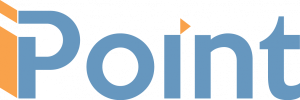To confirm that the sync to QuickBooks is working we will get started by pulling in your chart of accounts.
- Go to Settings > QuickBooks > Chart of Accounts (tab)
- Make sure you either have QuickBooks open on your computer (for desktop) or are logged in to QuickBooks Online.
- Click the Pull Chart of Accounts button
- After a few seconds you should see your chart of accounts populated in the window.
- If your chart of accounts does not appear, there is a problem with the sync process. Verify your actions from Step 1. If you still have problems, please call the iPoint Support team.
- Now you need to populate your default accounts in the second column. Each heading needs to match a GL account from QuickBooks. Select the appropriate GL account under each of the headings. These will be the default accounts used in your software should a setting be missed in various places in iPoint.
- The third column is where you tell iPoint how to process various modifiers. You will need to create an item containing the appropriate GL information for each of the modifiers listed. More details are provided in the Settings module.
- At the bottom of the third column you will either see a “Summary” field or “Request for Payment” and “PMT” fields, depending on which accounting method you are using (Standard or RFP).
- If you see “Summary”, you will choose a summary item that you created in the Items module. This will tell iPoint how to push Progress or Summary Invoice payment details to QuickBooks. Go to the Items module and create a new item called Summary. The inventory type will be “Other Charge.” Now select the chart of accounts you want your summary payments to go to. Return to the QuickBooks settings and select the Summary item you created in the Summary field.
- If you see “Request for Payment” you have chosen to use the advanced Request for Payment billing process. Just like in step 9, you will need to create an item in your Items module called RFP. Again, the inventory type will be “Other Charge” and you will select the appropriate GL accounts where you want payment requests to go. Then go back to QuickBooks settings and fill in that item in the Request for Payment field.
- If you are using the advanced RFP billing process, you also need to assign a payment item in the PMT field. However, this process is different. Go to QuickBooks Desktop and create a new item in the QB item list. The inventory type of item in QuickBooks must be Discount. Note: QuickBooks Online does not have a Discount item type, so you will need to use the Non-Inventory type instead.
- More specific details about setting up these default RFP items is available in the RFP setting section of this manual.
- Once the Payment item is set up, you need to import that item from QB into iPoint. Use the directions in Step 4 below for importing items to bring the newly created PMT item into iPoint. And then choose the PMT item in the drop-down list in QuickBooks settings.
.
iPoint Version:
10.0430
Last modified:
11 May 2021




